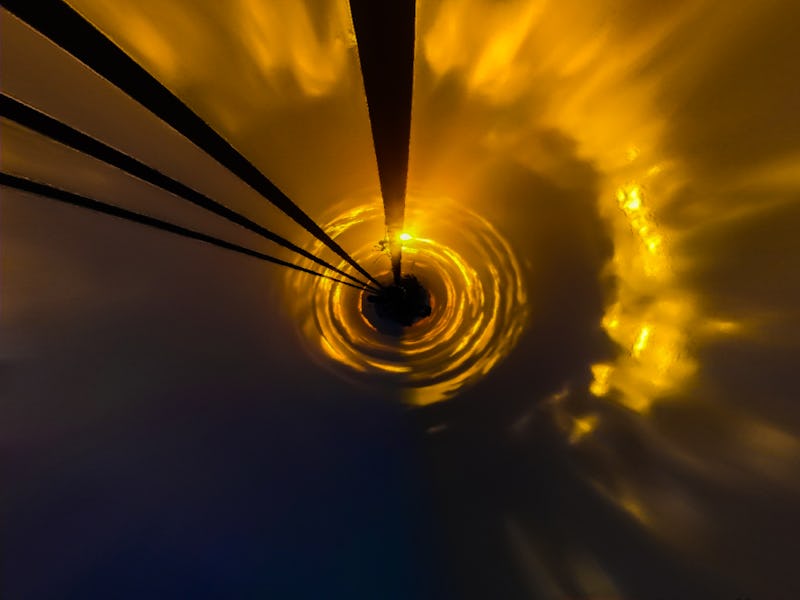238-year-old technology could give the best view of space ever
Up, up, and away.

Launching satellites is an expensive business — at least for now. But satellites are necessary in astronomy for one major reason — they get telescopes above the atmosphere.
The Earth’s atmosphere and its associated weather patterns are a massive hindrance to collecting good images. If a stray cloud passes in front of the observational target once over the course of a few days, it could ruin the entire image.
This is why some of the most striking astronomical pictures come from space-based observatories like Hubble. But now, a team of researchers from Durham, Toronto, and Princeton Universities has come up with a new way to get above that atmosphere that doesn’t involve a launch into orbit. They want to use a balloon.
The project, called the Superpressure Balloon-born Imaging telescope (SuperBIT), uses a helium-filled balloon the size of a football field to raise a .5-meter telescope to a 40-kilometer altitude.
At that height, the instrument is above 99.5 percent of the Earth’s atmosphere and is capable of snapping incredible photos similar to those captured by Hubble.
Balloons can also serve as a rocket launch pad, as is discussed in this UT video
The telescope technology itself is nothing special, but the ability to attach it to a balloon is. In the past such a large balloon would lose pressure quickly, making any sustained observational mission a moot point.
However, NASA recently developed a “superpressure” balloon that is able to hold its helium for months, allowing the entire assembly to stay aloft for long enough to collect good, clear data on an observational target.
That data will be aided by the stabilization array attached to the balloon platform. In a previous test flight in 2019, the telescope only varied by less than 1/36000th of a degree over the course of an hour. Extreme accuracy is necessary for long exposure times, and SuperBIT seems to pass that test.
Another advantage it has over telescope-based systems is that it eventually will, in fact, come down. Hubble has been using mostly the same imaging equipment for the last 30+ years, making its optics system a virtual dinosaur by modern-day standards. Just how difficult it is to repair a space-based telescope is clear from Hubble’s story.
With balloon-based observational platforms, there will always be the ability to launch an upgraded version a few months after the last iteration was in the air.
Having a much faster turn-around isn’t solely due to the eventual collapse of the balloon though. The mission itself is several orders of magnitude cheaper than a flagship mission like Hubble. Coming in at around $5 million in total for the design and balloon launch, such a low price even opens the possibility of having multiple missions aloft in parallel.
Part of the reason for the dramatic reduction in price is due to the lack of needed redundancy that is a hallmark of space-based missions. Hubble just used its redundancies to great effect recently; however, it required a repair mission after its launch, before it was ever even able to take an effective picture, and several upgrades since then. If a $5m balloon is launched, the worst case is simply to wait a few months for it to come back down before launching again.
The advantages of this system simply write themselves, and the new .5 meter telescope to be launched next year is just the beginning. Scientists are already planning a test mission for a 1.5-meter aperture, and the launch system itself is capable of carrying up to a 2-meter telescope. That is almost the size of Hubble’s main reflector.
With more advances in this novel balloon technology, it is conceivable that balloon-based observatories of all shapes, sizes, and frequency sensitivities, will have a place in the sky. If it gets astronomers and the general public even more spectacular pictures on par with what the best space-based observatories are capable of, it will be well worth it.
This article was originally published on Universe Today by ANDY TOMASWICK. Read the original article here.
This article was originally published on